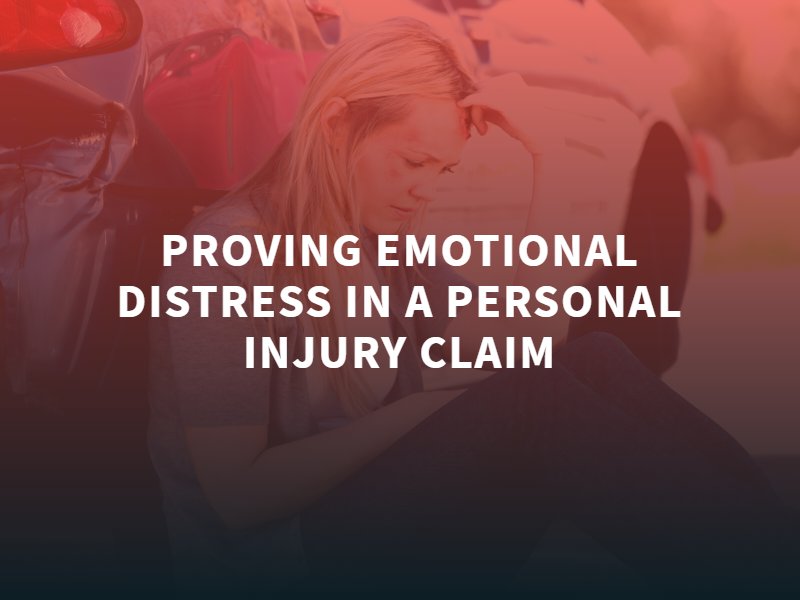
Sustaining a personal injury can be a significant setback for a victim and their family. Not only does an injury victim have to deal with the pain and suffering from the actual physical injury, but they may also have to deal with severe emotional distress.
Emotional and psychological injuries can be incredibly detrimental to an injury victim’s well-being, though compensation for these injuries is often overlooked. Here, our team of Phoenix personal injury lawyers want to discuss how you can prove emotional distress injuries if you or a loved one have been injured due to careless or negligent actions of another individual.
Emotional distress damages are usually allowed in personal injury cases, and they are designed to compensate victims for the emotional and psychological impact that the injury has had on their daily lives. There are various ways that emotional distress can manifest itself in a person’s life after they sustain an injury, and these emotional injuries can arise due to the accident itself, the injuries, and the recovery process. Some of the main types of emotional distress include the following:
Emotional distress is very subjective, and it varies significantly from person to person. There is no exact definition of emotional distress damages, and it is crucial to work with a skilled attorney who can help prove these injuries in court.
Evidence is a significant factor in understanding whether or not a person can recover emotional distress damages in a personal injury lawsuit. There are various ways that an injury victim can prove that they have sustained emotional distress. Here, we list several examples of evidence that could be used in a claim:
If you or somebody you love has been injured due to the careless or negligent actions of another individual, company, or entity, you should speak to a skilled lawyer as soon as possible. An attorney will be able to use their resources to determine liability in the case and handle negotiations with all parties to secure fair compensation.
Additionally, an attorney will be fully aware of how to prove emotional distress damages in your case. At Torgenson Law Arizona Injury Lawyers, we are ready to help when you need an Arizona personal injury attorney. You can contact us for a free consultation of your case by clicking here or calling 602-600-0492.

John Torgenson is a highly experienced personal injury lawyer with over 20 years of practice in Arizona. He earned his Bachelor’s degree from the University of Utah and his Juris Doctor from Notre Dame. John has a proven track record of securing substantial verdicts and settlements, including an $8.25 million recovery for a gunshot injury victim. His expertise has earned him AVVO ratings and recognition as a Super Lawyer.
John is also a sought-after lecturer on personal injury law, sharing his extensive knowledge with peers and aspiring attorneys. Beyond his legal practice, John is an avid golfer and actively supports organizations like the Military Assistance Mission, Arizona School for the Arts, Page Balloon Regatta, University of Arizona Foundation, Junior Achievement of Arizona, and the Tim Huff Pro Bono Golf Classic.
Passionate about advocating for injury victims, John dedicates his career to battling insurance companies and corporate interests, ensuring that the rights of those who are hurt are vigorously defended.
